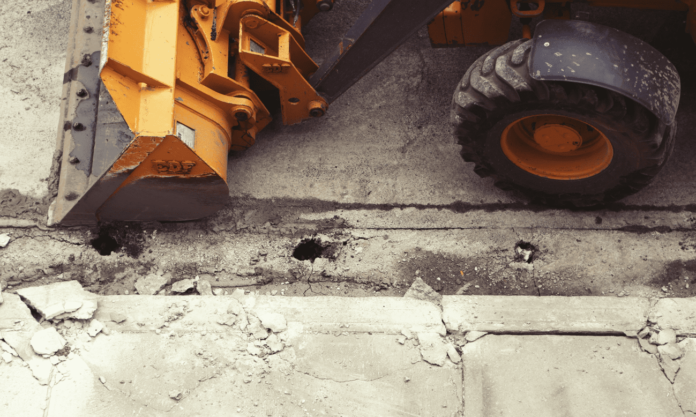Construction can feel like a never-ending series of updates and upgrades, not just in the buildings and infrastructure, but in the very tools and equipment that get the job done. From leveraging technology to ensuring the safety and efficiency of your team, innovating construction equipment is often a necessity. To keep your business updated, here are ten equipment upgrades that modern construction businesses are incorporating into the fold.
GPS and Fleet Monitoring Technology
In this digital age, it’s no surprise that construction vehicles are getting smarter. With GPS and fleet monitoring technology, enterprises can track machinery and vehicles in real time to optimize routes and save money on fuel. This tech also enhances security measures, enabling businesses to recover stolen equipment quickly. The finesse of GPS solutions can also provide insights into machine diagnostics, allowing for proactive maintenance that reduces downtime.
Moreover, GPS and fleet monitoring technology aids in improving the overall efficiency of construction projects. By providing precise location data and the operational status of each piece of equipment, project managers can make informed decisions, ensuring that the right equipment is at the right place and time. This level of coordination can significantly decrease project delays and costs associated with idle machinery.
Durable Telematics Devices
For a robust connection between you and your fleet, durable telematics devices are the perfect solution. These weatherproof, rugged instruments are vital in harsh construction site conditions. They relay accurate machine data consistently, which is invaluable when it comes to assessing equipment performance, scheduling maintenance, and ensuring that all aspects of a project are running smoothly.
In addition to their ruggedness, these telematics devices are designed with the user in mind, offering interfaces that are both intuitive and user-friendly. This ease of use ensures that data can be accessed and interpreted quickly, without the need for specialized training, making it easier for teams to adapt and respond to the information provided. Furthermore, the integration of customizable alerts means that project managers and equipment operators can be immediately notified of any critical issues.
Smart Telescopic Handlers
Imagine for a moment having telescopic handlers on-site that could ‘see’ for themselves. Smart technology in this equipment is enabling just that, with advanced load management features and attachments that can be changed quickly and easily. These upgrades help workers avoid accidents by providing real-time weight verification and ground-engaging features that enhance traction and stability.
Smart telescopic handlers are revolutionizing material handling on construction sites by integrating safety protocols directly into the equipment’s operation. These intelligent machines are equipped with sensors and cameras that provide operators with enhanced visibility, mitigating the risks associated with blind spots. This feature is crucial in crowded or complex job sites where traditional visibility might be compromised.
Autonomous Robots for Repetitive Tasks
One of the most prevalent advancements is the use of autonomous robots for routine and repetitive tasks on the construction site. From bricklaying to concrete breaking, these robots are precise and tireless, which substantially reduces the risk of repetitive strain injuries among crew members. In addition, autonomous robots are also rapidly adapting to complex construction environments.
Equipped with sophisticated AI algorithms, they can learn and improve over time, ensuring that their tasks are completed with greater efficiency and accuracy with each project. This adaptability is crucial in construction, where no two sites are exactly alike, and each project may present unique challenges. Furthermore, the implementation of these robots can lead to substantial cost savings, reducing the need for manual labor in high-risk or highly repetitive tasks and minimizing the occurrence of errors.
High-Efficiency HVAC Systems for Onsite Trailers
Your team should be as comfortable as possible during breaks or when setting up the office on a new site. High-efficiency HVAC systems for onsite trailers ensure that there’s a place for workers to rest and recharge, all while reducing energy consumption and environmental impact. Especially in regions with extreme climates, this is an upgrade much appreciated.
Besides providing a comfortable resting environment, high-efficiency HVAC systems offer vital health benefits. They filter out dust, pollen, and other air pollutants, ensuring cleaner air for construction personnel, which is crucial on sites where air quality might be compromised by dust and debris. This feature enhances overall worker satisfaction and productivity, as teams are less likely to suffer from respiratory issues or allergies triggered by poor air quality.
Solid Rubber Loader Tire
For heavy loaders, the introduction of various solid rubber loader tire options is a game-changer. They’re puncture-proof, reducing the chance of a downtime-inducing flat. They also have a longer lifespan, which means less frequent replacements. These tires are known for their stability and can be a significant upgrade for any loader operation, providing a smoother, more reliable drive.
Integrated Onboard Diagnostic Systems
Equipment diagnostics are crucial to keep operations running smoothly. Integrated onboard diagnostic systems give operators insight into a machine’s health in real time. This prompt understanding of maintenance needs not only keeps your machines on the job but also prevents costly repairs that could result from neglecting minor issues. These systems also provide data analysis, allowing for predictive maintenance schedules that optimize equipment performance and reduce downtime.
Advanced Safety Alert Systems
The safety of your crew is paramount. Advanced alert systems equip heavy machinery with a range of sensors, cameras, and alarms that notify operators of potential hazards, such as approaching workers or site boundaries. Safety should never be taken for granted, and these systems go a long way in preventing accidents. Moreover, these systems also record data that can be used for post-accident analysis, enabling businesses to continually improve safety protocols and procedures.
Mobile-Based Work Order Management Apps
Efficient management is key. Mobile-based work order management apps for supervisors and team leaders streamline the process, allowing them to assign tasks, track progress, and manage budgets without being tethered to an office. Real-time updates provide critical information at their fingertips, even when they’re on the move. This feature is invaluable for supervisors who are overseeing multiple projects simultaneously, as it allows them to monitor progress and address any issues promptly.
Security Features in Heavy Equipment
The anti-theft technology landscape has evolved significantly. Heavy equipment now comes with enhanced security measures that can immobilize machinery remotely and require verification before starting. This, coupled with GPS tracking, is a formidable deterrent to would-be thieves. The peace of mind that new security features bring is invaluable.
Overall, these equipment upgrades don’t just make life easier—they can be the difference between projects that soar and those that struggle. By incorporating these into your construction business model, you’re not just staying up to date; you’re demonstrating a commitment to the safety, efficiency, and quality that modern consumers expect. And with competition in the construction industry growing fiercer every day, these upgrades are a necessary means of staying ahead and thriving.



